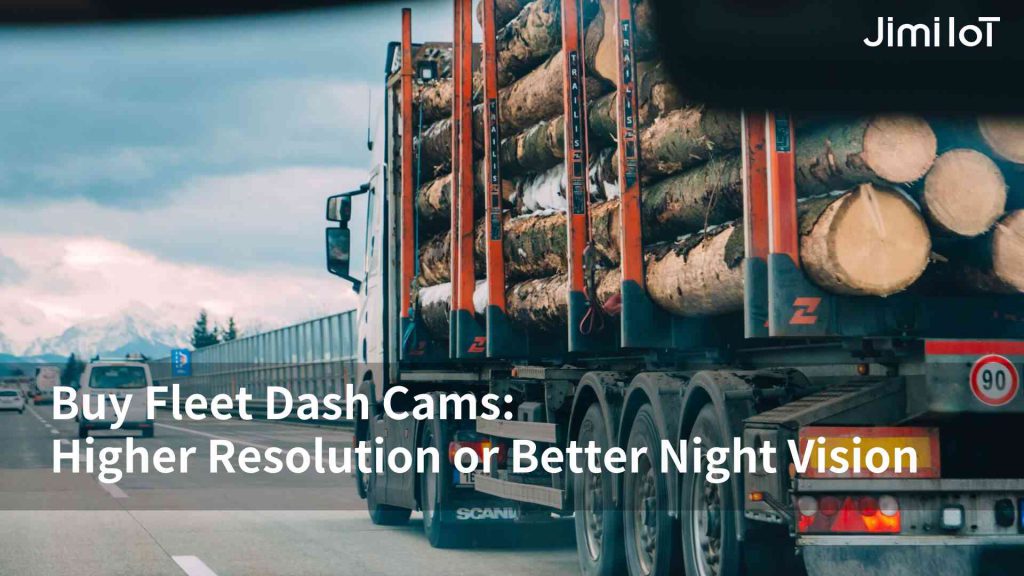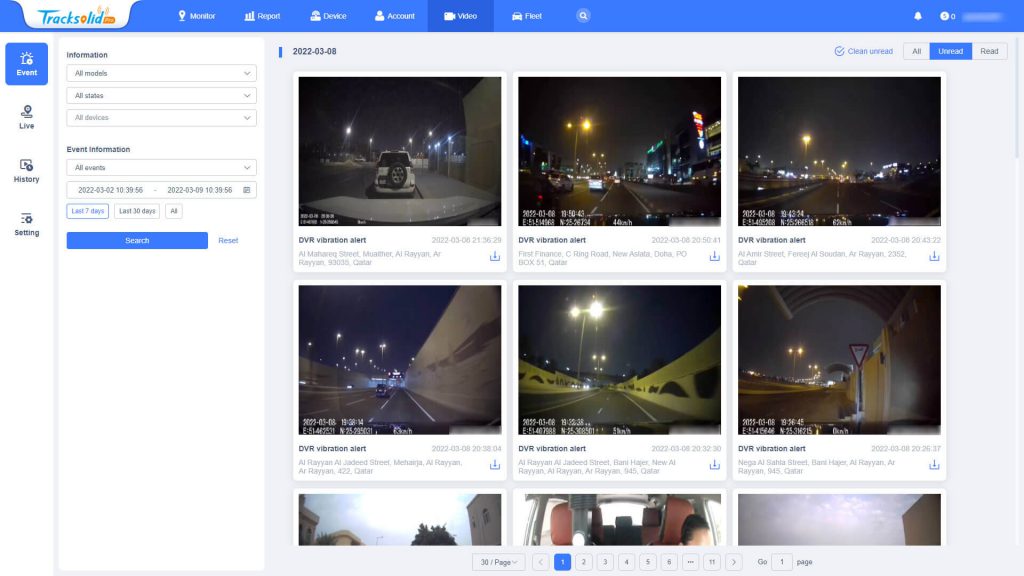Are you considering installing a fleet dash cam in your commercial vehicles? That’s a smart move! Fleet dash cams offer many benefits, including improving driver safety, reducing insurance costs, and providing valuable evidence in case of accidents. But when it comes to choosing a fleet dash cam, one of the questions that often arises is: the higher the resolution of the dash cam, the worse the night vision effect. Let’s take a closer look at this topic.
Firstly, let’s define what we mean by “resolution.” The resolution of a dash cam refers to the number of pixels that the camera can capture. The higher the resolution, the more detail the camera can capture. For example, a 1080p camera can capture 1920 x 1080 pixels, while a 4K camera can capture 3840 x 2160 pixels.
Now, let’s talk about night vision. Night vision is a crucial feature in fleet dash cams since many accidents happen at night or in low-light conditions. Night vision allows the camera to capture clear footage even in the dark, which can be essential in case of an accident or other incident.

What is night vision in a dash cam?
Before we discuss the relationship between resolution and night vision, let’s first understand what night vision is in a dash cam. Night vision refers to the camera’s ability to capture clear video footage in low-light conditions. This is especially important for fleet vehicles that often operate at night or in low-light environments.
Does a higher resolution dash cam mean worse night vision?
So, why can higher resolution result in poorer night vision? The answer lies in the size of the camera’s pixels. Higher-resolution cameras have smaller pixels, which means that each pixel captures less light. This can result in grainy or blurry footage when operating in low-light conditions.
Additionally, higher-resolution cameras often have more complex processing systems. These systems may prioritize image sharpness over brightness, resulting in footage that looks sharper but may be too dark to be useful in low-light conditions.
But some people think that the resolution of the camera does not directly affect the night vision effect. However, there are several factors that affect the quality of night vision footage.
One factor that can impact the quality of night vision footage is the size of the camera’s image sensor. The image sensor is the part of the camera that captures the light and converts it into an image. A larger image sensor can capture more light, which can improve the quality of night vision footage. However, the size of the image sensor is not necessarily linked to the resolution of the camera. It’s possible to have a high-resolution camera with a large image sensor that still offers excellent night vision capabilities.
Another factor that can impact the quality of night vision footage is the type of night vision technology used in the camera. There are two main types of night vision technology used in fleet dash cams: infrared (IR) and starlight. IR night vision uses infrared LEDs to illuminate the scene in front of the camera, while starlight night vision uses a combination of software and hardware to enhance the camera’s sensitivity to light. Both technologies can work well, but they have different strengths and weaknesses.
In general, IR night vision tends to work better in complete darkness, while starlight night vision works better in low-light conditions. However, the quality of the night vision footage also depends on the specific camera model and the quality of its components, such as the lens and the image processor.
So, what about the resolution of the camera? While the resolution itself does not impact the quality of night vision footage, a higher-resolution camera may require more advanced components in order to provide clear footage in low-light conditions. For example, a high-resolution camera may require a larger image sensor or a more powerful image processor in order to capture clear footage at night. If these components are not up to par, then the night vision footage may suffer, but this is not necessarily a direct result of the camera’s resolution.
Additionally, it’s worth noting that the resolution of the camera can impact the storage requirements for the footage. Higher-resolution footage requires more storage space, which can be a concern if you have limited storage capacity on your fleet vehicles. However, this is not directly linked to the quality of the night vision footage.

5 Factors to consider when choosing a fleet dash cam
When choosing a fleet dash cam, there are several factors to consider to ensure you get the right balance between resolution and night vision. Here are some things to keep in mind:
1. Resolution
While a higher resolution can mean clearer footage during the day, it’s important to consider the camera’s ability to capture clear footage in low-light conditions. A resolution of 1080p is usually sufficient for most fleet applications.
2.Sensor Quality
The quality of the camera’s sensor is also important. A camera with a high-quality sensor will be able to capture more light, resulting in clearer footage in low-light conditions.
3.Lens Quality
The quality of the camera’s lens is also important. A lens with a high-quality coating can help to reduce glare and improve visibility in low-light conditions.
4.Night Vision Mode
Many fleet dash cams have a night vision mode that can help to improve visibility in low-light conditions. Look for a dash cam with a night vision mode that uses infrared lights, as these tend to provide the best results.
5.Camera Placement
The placement of the camera is also important. Make sure to place the camera in a position that will provide the best possible view of the road ahead, especially at night.
When choosing a fleet dash cam, it’s important to consider all the factors that are important to you. Look for a dashcam that offers high-quality components and advanced features like GPS and smart alerts. It’s also important to consider factors like ease of installation and compatibility with your fleet management software.
In conclusion, a higher-resolution camera may require more advanced components to deliver clear footage in low-light conditions. When choosing a fleet dash cam, consider all the factors that are important to you, including resolution, night vision technology, and storage capacity. With the right dash cam, you can improve driver safety, reduce insurance costs, and protect your business from liability issues.
Why Jimi IoT?
Jimi relies on innovative solutions for driver status monitoring and vehicle tracking for fleet management, more effective driver tracking, recording, notification, monitoring and efficient fleet management.
Jimi has more than 20+ years of experience in the loT/loV industry and a team of experts to assist you in the adoption. We offer ready-todeploy solutions (with IoT SIM cards for worldwide connectivity) as well as OEM, ODM.and OBM services to suit your industry-specific needs.
 US
US ES
ES PT
PT TH
TH VN
VN JP
JP


